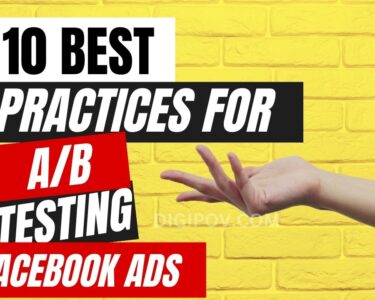If I am not wrong, you are familiar with Facebook Ads Library and probably are a Digital Marketer or a business owner. And you have seen advertisements that you want to save for future reference or maybe take inspiration from Video and create your version.
Have you ever felt how nice an Ad looks? You really like to save the idea but struggles to find the download button. You even vist the Facebook page for the ad but feels where do they go for downloading. Sometimes even if you keep the Ad shared, the Facebook removes it for some reason making your score zero. You miss the opportunity to store such a unique idea for your future and keeps on worrying. Here! Answering all your worries in a bit.
Facebook Ads Library is your answer for your worries as it is the only option for you to access the Video. The Facebook Ads Library, as every active ad on Facebook is accessible through the Ad library only. And that being said, today, you will learn how to download those videos without any extensions or software. But first, let’s look at why the Facebook Ad Library is essential again. You need to understand that there is a key reason why marketers and business owners worldwide use this service of Facebook daily. There are so many benefits of using this particular service from Facebook that you will be amazed. Let’s not bore you with such information but start our guide before you leave me. However, never miss the basics because all may not know about Facebook Ads Library.
What is Facebook Ads Library?
I will not puzzle your mind with too much information. Here are a few must-known things if you are trying to navigate the Facebook Ads library and use it for your benefit.
The Facebook Ads Library is a wealth of information for advertisers. Every active ad across all Meta Platforms is listed in the Facebook Ad Library. Thanks to the Facebook Ad Library, anyone can now access any Facebook advertising from any brand.
Using the Ad Library has many benefits. You may look at some real-time examples for suggestions on how to enhance your Facebook ad campaigns if you’re getting ready to design content and launch your first campaign. Whether you work as a marketer or a business owner is irrelevant because we all need Facebook ads Library for research.
You may search for any ad appearing on any Meta platform, one of the ads library’s key features. We must research before launching a campaign as this will help us improve our ads.
By taking a brief look at the photos and videos your rivals are using, you may find a lot about how they position their business and how much effort they spend on creative testing from the Facebook Ads Library.
A step-by-Step Guide for Video Download through Facebook Ads Library
1. First, you need access to the Ads library, which you can do by typing the URL “web.facebook.com/ads/lbrary “, or you can search it on google and find the ads library. Just click on the first result, and voila, you are inside the Ads Library.
2. Now you need to set your location and add a category to search for your desired ad. For the location, you can select All counties, and for the Ad category, you can select the All Ads category for better results. You can look for ads by searching keywords related to the product or if you want to download an ad from a particular brand. Then search for the brand name and select their business page to access all ads running by them. In case, you have planned to look for Ads regarding any specific country, change the selection to that country and continue. Further, if you are planning to see certain category of Ads, change to the specific category and so on.
3. After searching for the brand or the keyword, you need to narrow down your results with the filters options. You cannot see everything at a time and need to be patient. Go to filters and then change the media type to Videos and it will show you only video ads. This feature makes it very easy to find what you need. You can also narrow it down to a specific Meta platform by further filtering. Now look for the ad that you want to download.
4. Here the real work begins. Now hover your cursor over to the Video and right-click on the Video. As usual, a pop-up screen will arrive and you need to select the option “Save as” to save your video. Here is the trick while saving the video as you need to select the type. The type extends from .mp4 at the end of its name in usual cases. You can also save it by going over to My pc or This pc where you search for the folder where you want to download it and rename it to whatever you want and then again put .mp4 at the end. Now you have downloaded or may have successfully saved the Video. Enjoy, my friend,
Here I will share a few images to make it easy for you! The ultimate guide on how to download videos from Facebook Ads Library!
I hope this brief guide helps you with your problem and you might successfully download the video for which you read this article. My goal was to help people because I learned it myself when I started and understood how a simple guide can help any person on the long way. So in this article, you will find the answer to downloading videos from the Facebook Ads library. This is simple and very easy to do. And one pro tip, my friend, is that you can’t just copy the link and try downloading it from any other software or extension. Because ads are private property, third-party apps or sites don’t have permission over any private property. Bye for now, and as always, thank you for reading!



